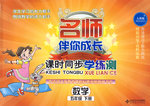题目内容
完形填空
I remember quite well a day 17 years ago. That day, our twin sons, Chad and Brad, ___ their car and left home to attend college. I realized that our __ would soon become a “table for two”. ____, the boys would come home on the weekends, but ___, I knew our family life would never be exactly the same again.
The boys walked around each room to ____ they hadn’t forgotten anything they needed. I packed a cooler with ____ and their favorite cold snacks. I found a box and filled it with essential ____ items. I thought they might go to bed hungry that night. I ____ my wallet and placed the little bit of ___ I had in their hands.
We all walked ___. Chad and Brad gave me big ____ and quickly got into their car. I ____ as they drove away. When their car was ____, I sat down on the driveway and cried ____ than I had cried in a long time. My husband Roy tried to ____ me, but I could see grief in his eyes, as well.
There are many parents who would ___ this period. Bittersweet feelings will be ____ while I cannot explain them adequately. I can still remember ____ I felt when we began that new chapter in our lives.
___ time going by, however, Roy and I are now accustomed to our table for two and we enjoy our lives together. I have to admit I still miss our children and the old ___ we had together.
1.A. repairedB. washedC. loadedD. decorated
2.A. roomB. gardenC. chairD. table
3.A. SoB. YetC. SureD. Therefore
4.A. even thenB. even soC. ever sinceD. ever after
5.A. make sureB. look aroundC. think aboutD. sort out
6.A. waterB. drinksC. wineD. medicine
7.A. foodB. clothesC. bookD. supply
8.A. tidiedB. cleanedC. closedD. emptied
9.A. paperB. goodsC. cashD. check
10.A. outsideB. indoorsC. forwardD. backward
11.A. smilesB. staresC. kissesD. hugs
12.A. talkedB. wavedC. ranD. cried
13.A. travelingB. rushingC. out of orderD. out of sight
14.A. harderB. lighterC. more heavilyD. more firmly
15.A. delightB. persuadeC. comfortD. help
16.A. adventureB. experienceC. look forD. depend on
17.A. absentB. presentC. returningD. concealing
18.A. whatB. whenC. whyD. how
19.A. WithB. AsC. ForD. About
20.A. tablesB. housesC. timesD. lives
 名师伴你成长课时同步学练测系列答案
名师伴你成长课时同步学练测系列答案
